Scientific name Chlorophyta Rank Phylum | ||
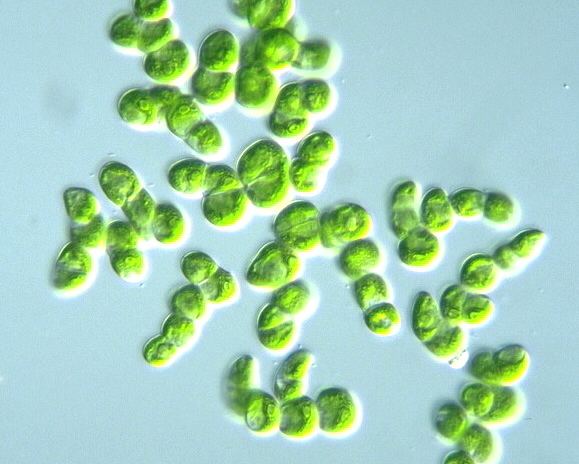 | ||
Division ChlorophytaReichenbach, 1828, emend. Pascher, 1914, emend. Lewis & McCourt, 2004 Lower classifications | ||
Chlorophyta is a division of green algae, informally called chlorophytes. The name is used in two very different senses, so care is needed to determine the use by a particular author. In older classification systems, it refers to a highly paraphyletic group of all the green algae within the green plants (Viridiplantae) and thus includes about 7,000 species of mostly aquatic photosynthetic eukaryotic organisms. In newer classifications, it refers to one of the two clades making up the Viridiplantae, which are the chlorophytes and the streptophytes. The clade Streptophyta consists of two divisions, the Charophyta and the Embryophyta. In this sense the Chlorophyta includes only about 4,300 species. Like the land plants (bryophytes and tracheophytes), green algae contain chlorophyll a and chlorophyll b and store food as starch in their plastids.
Contents
- Ecology
- Classifications
- Phylogeny
- Leliaert et al 2012
- Pombert et al 2005
- Lewis McCourt 2004
- Hoek Mann and Jahns 1995
- Bold and Wynne 1985
- Mattox Stewart 1984
- Fott 1971
- Round 1971
- Smith 1938
- References
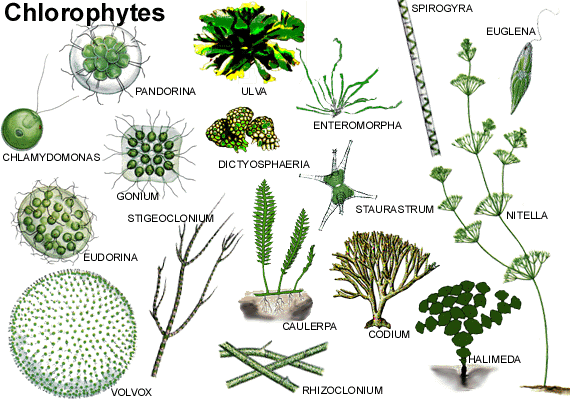
The division contains both unicellular and multicellular species. Some conduct sexual reproduction, which is oogamous or isogamous. All members of the clade have motile flagellated swimming cells. While most species live in freshwater habitats and a large number in marine habitats, other species are adapted to a wide range of land environments. For example, Chlamydomonas nivalis, which causes Watermelon snow, lives on summer alpine snowfields. Others, such as Trentepohlia species, live attached to rocks or woody parts of trees. Monostroma kuroshiensis, an edible green alga cultivated worldwide and most expensive among green algae, belongs to this group.
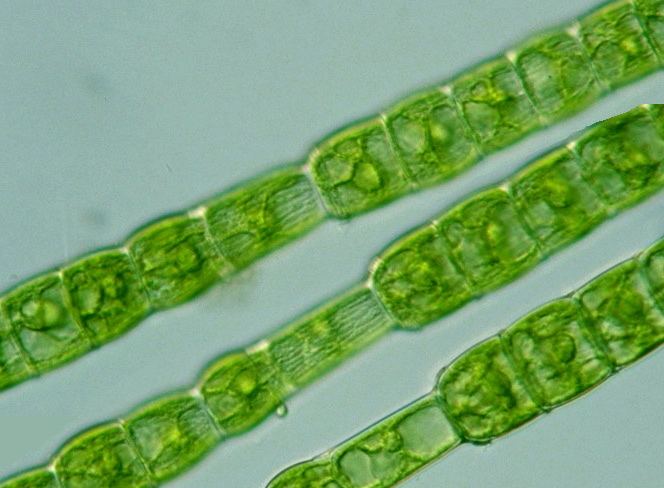
Some members of the Chlorophyta form symbiotic relationships with protozoa, sponges, and cnidarians. Others form symbiotic relationships with fungi to form lichens.
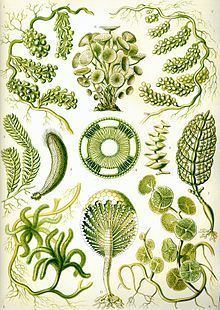
Ecology
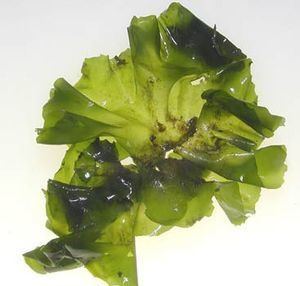
Species of Chlorophyta (treated as what is now considered one of the two main clades of Viridiplantae) are common inhabitants of marine, freshwater and terrestrial environments. Several species have adapted to specialised and extreme environments, such as deserts, arctic environments, hypersaline habitats, marine deep waters and deep-sea hydrothermal vents. Some groups, such as the Trentepohliales are exclusively found on land. Several species of Chlorophyta live in symbiosis with a diverse range of eukaryotes, including fungi (to form lichens), ciliates, forams, cnidarians and molluscs. Some species of Chlorophyta are heterotrophic, either free-living or parasitic. Two common species of the heterotrophic green alga Prototheca are pathogenic and can cause the disease protothecosis in humans and animals.
Classifications
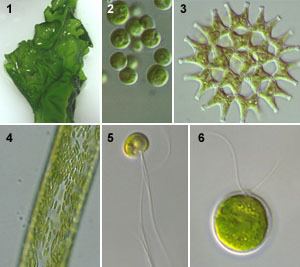
Characteristics used for the classification of Chlorophyta are: type of zoid, mitosis (karyokynesis), cytokinesis, organization level, life cycle, type of gametes, cell wall polysaccharides and more recently genetic data.
Phylogeny
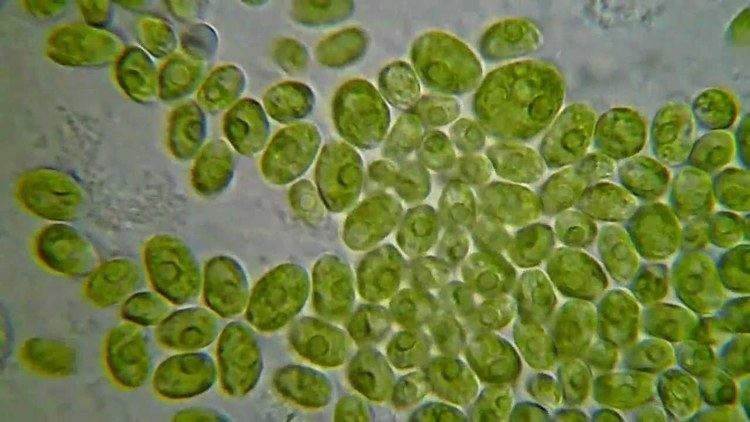
A newer proposed classification follows Leliaert et al. 2011 and modified with Silar 2016 for the green algae clades and Novíkov & Barabaš-Krasni 2015 for the land plants clade.
Leliaert et al. 2012
Simplified phylogeny of the Chlorophyta, according to Leliaert et al. 2012. Note that many algae previously classified in Chlorophyta are placed here in Streptophyta.
Pombert et al. 2005
A possible classification when Chlorophyta refers to one of the two clades of the Viridiplantae is shown below.
Lewis & McCourt 2004
Hoek, Mann and Jahns 1995
Classification of the Chlorophyta, treated as all green algae, according to Hoek, Mann and Jahns 1995.
In a note added in proof, an alternative classification is presented for the algae of the class Chlorophyceae:
Bold and Wynne 1985
Classification of the Chlorophyta and Charophyta according to Bold and Wynne 1985.
Mattox & Stewart 1984
Classification of the Chlorophyta according to Mattox & Stewart 1984:
Fott 1971
Classification of the Chlorophyta according to Fott 1971.
Round 1971
Classification of the Chlorophyta and related algae according to Round 1971.
Smith 1938
Classification of the Chlorophyta according to Smith 1938:
